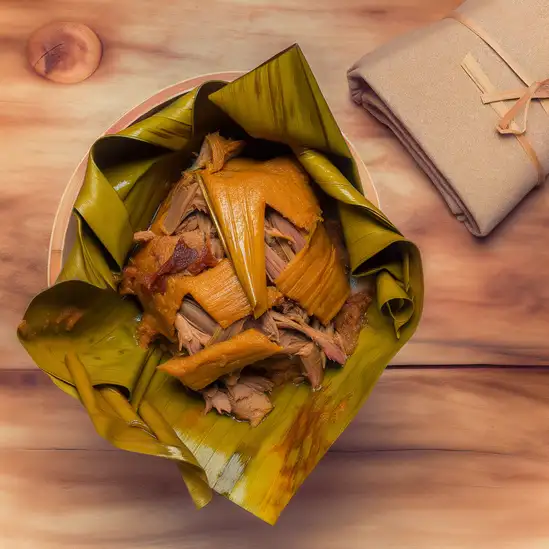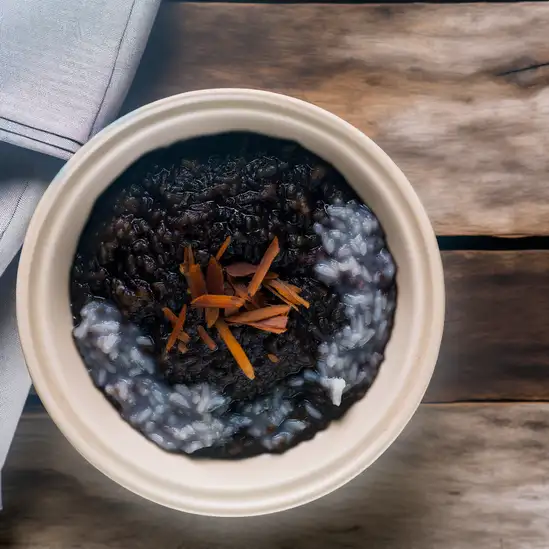



If you find yourself wandering through Kota Denpasar,you’ll immediately notice its lively heartbeat—a city that hums with everyday life yet carries a deep cultural rhythm beneath the surface. It’s not the polished tourist hub like southern Bali,but that’s exactly what makes it so captivating. The streets buzz with scooters weaving through markets where the scent of fresh spices mingles with the earthy aroma of tropical fruits. Vendors call out in warm,melodic tones,inviting you to taste something new or simply share a smile. Denpasar feels like the authentic soul of Bali,where tradition and modern life dance side by side. You’ll see women in vibrant kebayas carrying offerings to temples,while nearby,young artists sketch murals that splash color onto old walls. The city’s pulse is both chaotic and comforting,with the clatter of street food stalls serving up fragrant nasi campur and the gentle chime of temple bells weaving through the air. What’s truly special is how Denpasar invites you to slow down and soak in its layers—whether it’s the warmth of a local’s greeting,the taste of freshly brewed Balinese coffee,or the sight of intricate carvings on ancient temples tucked between bustling streets. It’s a place where you don’t just visit; you become part of the daily story,feeling the city’s spirit in every step you take.
The information on this page is currently being reviewed by Tripkliq and should be used as a guide only
Eng word: Hello
Eng pronunciation: HAH-loh
Local language: Halo
Eng word: Goodbye
Eng pronunciation: suh-LAH-maht TING-gahl
Local language: Selamat tinggal
Eng word: Thank you
Eng pronunciation: teh-REE-mah KAH-see
Local language: Terima kasih
Eng word: How much
Eng pronunciation: buh-RAH-pah
Local language: Berapa
Eng word: Toilet
Eng pronunciation: TOY-let
Local language: Toilet
Eng word: Help me
Eng pronunciation: TOH-long SAH-yah
Local language: Tolong saya
Eng word: Yes
Eng pronunciation: YAH
Local language: Ya
Eng word: No
Eng pronunciation: TEE-dahk
Local language: Tidak
Eng word: Excuse me
Eng pronunciation: puhr-MEE-see
Local language: Permisi
Denpasar was established as the capital of the Kingdom of Badung in the 18th century. The city has grown from a small kingdom to the bustling capital of Bali.
In 1906, Denpasar was the site of the Puputan Badung, a heroic battle where the Balinese royal family and their followers chose to fight to the death rather than surrender to Dutch colonial forces.
The Bajra Sandhi Monument, located in the heart of Denpasar, commemorates the struggles of the Balinese people throughout history. It is a popular tourist attraction and a symbol of Balinese resilience.
Denpasar played a significant role in the Indonesian struggle for independence from Dutch colonial rule. The city was a center for nationalist activities and movements.
Pura Jagatnatha is the largest temple in Denpasar, dedicated to the supreme god Sanghyang Widi. Built in 1968, it is a beautiful example of Balinese architecture and a spiritual center for the local community.
Denpasar is known for its vibrant cultural festivals, such as the Bali Arts Festival, which showcases traditional Balinese dance, music, and crafts. These festivals attract tourists from around the world.
Established in 1932, Museum Bali in Denpasar houses a vast collection of Balinese artifacts, including traditional costumes, religious items, and historical documents. It offers a deep insight into Balinese culture and history.
Since becoming the capital of Bali in 1958, Denpasar has undergone significant modernization. The city has developed into a major economic and cultural hub, blending traditional Balinese heritage with modern amenities.
Renon Square, also known as Puputan Park, is a historical and recreational area in Denpasar. It is a popular spot for locals and tourists to relax and enjoy the beautiful surroundings, including the Bajra Sandhi Monument.
In Kota Denpasar, the most common Power Adaptor is Type C, Type F.



A Balinese version of satay made from minced meat mixed with grated coconut and spices, wrapped around bamboo sticks and grilled.

A traditional mix made from vegetables, coconut, and minced meat, seasoned with rich spices, often served as a side dish.

A mixed rice dish served with a variety of side dishes, including meats, vegetables, and sambal, often reflecting the local flavors of Bali.

Spiced chicken that is marinated and then wrapped in banana leaves before being slow-cooked, resulting in a fragrant and tender dish.

Slow-cooked duck marinated with a blend of spices and wrapped in banana leaves, resulting in tender and flavorful meat.

A black rice pudding dessert made with glutinous rice, coconut milk, and palm sugar, often enjoyed warm or cold.

Traditional Balinese snacks or cakes made from rice flour and coconut, often colorful and served during ceremonies and festivals.
If you find yourself wandering through Kota Administrasi Jakarta Pusat,you’ll immediately notice the pulse of a city that’s both historic and buzzing with modern energy. It’s a place where colonial-era buildings stand shoulder to shoulder with sleek skyscrapers,creating a fascinating blend of old and new. Walking down the streets,you can almost hear the echoes of history mingling with the chatter of office workers and street vendors. The air carries a mix of aromas—from the rich,spicy scent of street food stalls grilling satay to the faint,comforting smell of freshly brewed kopi from tiny warungs tucked in corners.
What really makes Jakarta Pusat special is its vibrant character. It’s the heart of the city’s administrative and cultural life,so you’ll find a lively mix of people—government officials,artists,students,and families—all weaving their stories into the urban fabric. The bustling markets,like Pasar Baru,invite you to haggle over colorful textiles and local snacks,while nearby museums and galleries offer a quiet retreat into Indonesia’s rich heritage.
There’s a rhythm here that’s both fast-paced and inviting. Whether you’re sipping a sweet es cendol under the shade of a tree in Merdeka Square or catching the golden light reflecting off the National Monument at dusk,Jakarta Pusat feels alive in a way that’s deeply human and endlessly fascinating. It’s a city that invites you to slow down,look around,and soak in the layers of life unfolding all at once.
Surabaya pulses with an energy that’s both vibrant and welcoming,a city where history and modern life dance side by side. As you wander through its bustling streets,you’ll catch the scent of sizzling satay mingling with the salty breeze from the nearby harbor. The city hums with the chatter of locals bargaining in lively markets,the clatter of motorbikes weaving through traffic,and the distant call of street vendors selling fresh tropical fruits. It’s a place where every corner tells a story—from colonial-era buildings standing proudly alongside sleek skyscrapers to colorful murals that splash life onto old walls.
What really makes Surabaya special is its character:tough yet warm,a city that’s seen its share of history but never lost its heart. The people here are fiercely proud and incredibly friendly,always ready to share a smile or a recommendation for the best local warung. Dive into the food scene and you’ll find yourself savoring rich,spicy flavors—like the famous rawon,a dark beef soup that’s both comforting and bold,or the sweet,sticky lontong balap that fills the air with fragrant spices.
Evenings in Surabaya have their own magic. The city lights flicker on,and the streets fill with the sounds of gamelan music drifting from cultural performances or the laughter spilling out of cozy cafes. Whether you’re exploring the historic old town or simply sipping kopi on a street corner,Surabaya invites you to slow down,soak in its layers,and feel the heartbeat of a city that’s alive in every sense.
If you ever find yourself wandering through Yogyakarta,you’ll immediately notice a rhythm that feels both lively and laid-back,like the city is humming a gentle,inviting tune. It’s a place where ancient traditions and youthful energy collide in the most beautiful way. As you stroll down Malioboro Street,the air is thick with the scent of sizzling satay and sweet jasmine from roadside stalls,while the chatter of locals bargaining and the distant beat of gamelan music create a vibrant soundtrack. The city’s heart beats in its art and culture—every corner seems to hold a story,from the intricate batik workshops to the majestic temples of Borobudur and Prambanan just a short ride away.
Yogyakarta’s charm lies in its warmth and authenticity. The people here are incredibly welcoming,often eager to share their crafts,stories,or a cup of strong Javanese coffee. You can feel the city’s deep respect for its heritage,yet it’s also a hub for creative souls,with street art splashed across walls and indie cafes buzzing with young artists and thinkers. The sunsets here are something else—casting a golden glow over the terracotta rooftops and ancient palaces,inviting you to pause and soak it all in.
Whether you’re wandering through the Sultan’s Palace,tasting gudeg (a sweet jackfruit stew) at a local warung,or simply watching the world go by from a cozy café,Yogyakarta wraps you in a sense of belonging. It’s a city that doesn’t just ask you to visit but to stay a little longer,to explore deeper,and to fall in love with its soul.
Imagine stepping into a city where sleek skyscrapers meet lush greenery,and every corner hums with a vibrant energy that’s both modern and deeply rooted in tradition. That’s Singapore for you—a place where the air carries the fragrant mix of blooming orchids and sizzling street food,and the streets buzz with a blend of languages and laughter. Walking through neighborhoods like Chinatown or Little India,you’ll catch the rich aromas of spices mingling with the sweet scent of tropical fruits,inviting you to explore further.
What’s truly captivating about Singapore is how effortlessly it balances the fast-paced pulse of a global hub with pockets of serene beauty. You can be wandering through the futuristic Gardens by the Bay one moment,marveling at the towering Supertrees glowing softly at dusk,and the next,find yourself savoring a bowl of laksa or chili crab at a bustling hawker center,surrounded by locals chatting animatedly. The city’s character shines through its people—warm,diverse,and proud of their heritage,yet always welcoming.
There’s a rhythm here that’s both energizing and comforting. Whether you’re cycling along the waterfront,catching a sunset over Marina Bay Sands,or simply sipping kopi in a cozy café,Singapore invites you to slow down and soak in its unique blend of cultures,flavors,and sights. It’s a city that surprises you with its layers,making every visit feel like a new discovery.
Kuala Lumpur feels like a vibrant heartbeat pulsing through the heart of Malaysia—where tradition and modernity dance effortlessly together. The moment you step into the city,you’re greeted by the towering silhouettes of the Petronas Twin Towers piercing the sky,their glass facades shimmering against the tropical sun. But it’s not just the skyline that captivates you; it’s the lively street scenes below. The air buzzes with the chatter of street vendors,the sizzle of satay grilling over open flames,and the sweet aroma of pandan and lemongrass wafting from bustling food stalls.
Walking through neighborhoods like Bukit Bintang or Chinatown,you’ll find a kaleidoscope of colors and sounds—vibrant markets brimming with spices,textiles,and handcrafted trinkets,while the calls to prayer from nearby mosques blend harmoniously with the hum of city life. The city’s rich cultural tapestry is woven from Malay,Chinese,and Indian influences,creating a unique blend you can taste in every bite of nasi lemak or teh tarik.
What I love most is how Kuala Lumpur never feels rushed. Whether you’re sipping kopi at a roadside stall or wandering through the lush greenery of the KL Forest Eco Park,there’s a warm,welcoming energy that invites you to slow down and soak it all in. It’s a city that surprises you at every turn—full of contrasts,flavors,and stories waiting to be discovered.
Manila is this vibrant,bustling heart of the Philippines that grabs you the moment you step off the plane. There’s an energy here that’s both chaotic and warm,like the city is alive and breathing with stories waiting to be discovered. Walking through its streets,you’ll catch the scent of sizzling street food mingling with the salty breeze from Manila Bay. The soundscape is a lively mix of jeepneys honking,street vendors calling out their wares,and the occasional laughter spilling from a nearby sari-sari store.
What makes Manila truly special is its rich tapestry of history and culture woven into everyday life. You can wander through Intramuros,the old walled city,and feel the echoes of Spanish colonial days in the cobblestone streets and centuries-old churches. Then,just a few blocks away,modern skyscrapers rise,showcasing the city’s dynamic spirit. The people here are incredibly warm and welcoming,always ready to share a story or recommend their favorite spot for halo-halo,a sweet,icy treat that’s perfect for cooling down in the tropical heat.
Manila’s charm lies in its contrasts—the old and new,the quiet moments in hidden courtyards and the lively buzz of night markets. It’s a place where you can savor rich Filipino flavors,dive into vibrant festivals,and feel the pulse of a city that’s constantly evolving but never loses its heart. If you want a trip that’s full of life,color,and genuine warmth,Manila’s waiting with open arms.
Vendors on the beach may charge exorbitant prices for food, drinks, or services like massages, especially if prices are not agreed upon beforehand.
Money changers may advertise attractive exchange rates but use tricks to shortchange tourists during the transaction.
Scammers may sell counterfeit tickets to popular attractions, leaving tourists unable to enter upon arrival.
Unlicensed individuals may pose as tour guides and provide subpar services or overcharge for tours.
Tourists renting motorbikes may be falsely accused of causing pre-existing damage and charged exorbitant repair fees.
Vendors in tourist-heavy areas may inflate prices for souvenirs, expecting tourists to negotiate or pay without questioning.
Rental scooters may be provided with an empty fuel tank, and renters are directed to nearby overpriced fuel sellers.
Individuals, sometimes with children, may aggressively beg for money, claiming to be in dire need, but are part of organized scams.
Some taxi drivers may refuse to use the meter and charge tourists inflated prices for short distances.
Tourists may be lured into attending presentations for timeshares or investments that turn out to be fraudulent.
Indonesia has very strict drug laws, and this includes Denpasar. The possession, use, or trafficking of illegal drugs can result in severe penalties, including long prison sentences and even the death penalty. Tourists should avoid any involvement with illegal drugs to avoid serious legal consequences.
In Kota Denpasar, smoking is regulated by local and national laws. Smoking is prohibited in public places such as schools, hospitals, public transportation, and government buildings. There are designated smoking areas where smoking is allowed. Violations can result in fines.
Vaping is subject to similar regulations as smoking in Denpasar. It is prohibited in public places and only allowed in designated areas. Tourists should be cautious and look for signs indicating where vaping is permitted to avoid fines.
What are other people saying about Kota Denpasar?
Recent Social posts about Kota Denpasar
There is nothing to show you for now.